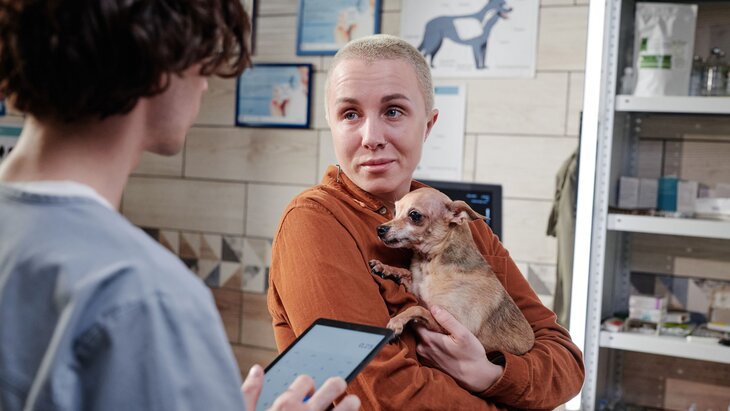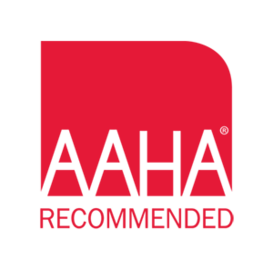6 Essential Questions to Ask Veterinary Clients
Associate Veterinarian, Speaker, Author - Penn-Ohio Veterinary Services and KMB Veterinary Media LLC
The way veterinary teams communicate with clients affects client retention, team satisfaction, and the level of care that patients receive. In the top hospitals, all team members are trained to provide excellent communication from the time clients enter the building until they leave, and over the phone or through other means in between appointments.
Credentialed veterinary technicians in particular are a crucial member of the team when it comes to client communication, often serving as the bridge between client and veterinarian when it comes to discussing treatment plans, financial estimates, discharge instructions, and general client education.
Here are six questions for veterinary clients that your team can use when taking a history or discussing treatment plans to help owners be active members of the patient care team.
1. "What are your goals for today's visit?"
This question invites clients to share their opinions, concerns, and feelings about how their pet is doing and what they want to accomplish. Using this question early in the course of the appointment can help guide where the trajectory of the remainder of the visit.
While these words can be used in any visit, I find them particularly helpful in these situations:
- Second opinion cases: Clients may seek a second opinion for reasons ranging from frustration at a lack of improvement in a medical problem, financial concerns, and wanting a different style of communication. Identifying what the client is looking for in your clinic’s opinion can help guide the focus of the visit, especially if you’ve reviewed the records and aren’t sure where to go next.
- End-of-life consultations: Some clients are very open about their concerns for their pet’s current quality of life. Other times, a team member may get a sense that the client wants to ask about quality of life or humane euthanasia but doesn’t know how to bring up the subject or feels guilty. Asking them an open question about their goals gives them a safe space to present their concerns and have an honest conversation about their feelings about their pet’s life.
- Overwhelmed clients: When clients come with a laundry list of questions or concerns, it can be stressful for the veterinary team. How a client answers this question can help to determine the most pressing concerns and make a game plan for the rest of the visit.

2. "What is your budget today?"
This question is one that may feel uncomfortable to ask but is essential to ensure that we are able to provide the best possible care to our patients. If a client expresses financial concerns outright or a team member is picking up on discomfort around finances, this can be a perfect time to pose this question.
I tell clients that this information helps me to make the best possible recommendations for their individual circumstances, which is the core of practicing a spectrum of care. Knowing what the total budget is for the visit ensures that funds remain for treatment. Using a client’s entire funds for diagnostics is a disservice to the pet and leaves the client and team frustrated.
Sometimes this question can be expanded if multiple visits are anticipated over a short period of time, such as with wound management, hospitalization, or frequent rechecks. Knowing that you have a certain amount of money available over a two-week period allows the veterinarian to determine which tests and treatments are most important at each visit and ensures we don’t start treatment only to run out of finances part way through.

We help vet teams tackle cost conversations.
Discover why the American Animal Hospital Association recommends Pawlicy Advisor as a streamlined solution for veterinary practices.
3. "What other questions do you have?"
This slight rephrasing of the classic closing question, “Do you have any other questions today?” moves the question from closed to open. It’s a more inviting way to elicit client concerns that haven’t been broached previously in the conversation.
This is a great question for veterinary technicians to ask clients after taking a general history in order to help prevent surprises from popping up at the end of the visit. Often, veterinary technicians are well-equipped to answer many of the client’s questions and can start client education before the veterinarian performs their examination. For any questions they can’t answer, the veterinarian can be prepared and make the most efficient use of the appointment time by knowing what concerns the client has before they enter the room.
4. "How do you feel about the treatment plan we've discussed?"
When we invite clients to share their opinions about our plans with a direct question such as “What concerns do you have about the treatment plan we've discussed?”, we give them permission to seek clarification or discuss reservations they may have been too nervous to bring up when listening to the options.
When we invite clients to share their opinions... we give them permission to seek clarification or discuss reservations they may have been too nervous to bring up...
Kate Boatright, VMD
They may mention concerns about patient comfort, their ability to medicate their pet, the time commitment to recheck the condition, or the affordability of long-term treatment. These are all valid concerns clients may have and offer veterinary professionals the opportunity to create a deeper relationship with their clients by validating and discussing their concerns and working with them to find solutions.
5. "Will your pet take oral medications?"
This closed-ended question can help open up conversations about what is feasible for the pet family. Patient compliance can be a limiting factor for many pet families, but they may be too embarrassed to admit they can’t give their pet oral medications. Clients may not be aware that there may be alternative treatment options, such as diet, long-acting injections, or transdermal medications, so asking this question gives veterinary teams opportunities to educate clients on alternative treatment strategies.
Additionally, this question encourages clients who haven’t been in a situation requiring medication for their pet before to consider possible obstacles. They can receive tips from an experienced veterinary team member at the moment instead of trying to discuss concerns over the phone after the client has gone home.

6. "Do you have a pet insurance policy?"
This question is one that our client service representatives (CSRs) can use during check-in. If a client already has a policy, great! If they don’t, asking this question offers an opportunity to educate them on their options . This is especially helpful for young, healthy animals coming for their annual visit.
CSRs can get into the routine of including this question with their check-in for every patient to increase client awareness of pet insurance and provide educational resources, such as Pawlicy Advisor.
Final Thoughts
These questions to ask veterinary clients can help you build a stronger relationship with pet owners and deliver better care to their pets. By implementing open communication into your practice operations, you can help both clients and staff feel more comfortable and satisfied with their experience.
A Team Approach to Financial Conversations in Clinical Practice
Over the next several months, Dr. Boatright will explore ways to help reduce the stress of financial conversations and help to prepare pet owners for the costs of pet ownership — both expected and unexpected.
Do you want to find the best pet insurance?
Let's analyze your pet's breed, age, and location to find the right coverage and the best savings. Ready?
Analyze My PetAbout Pawlicy Advisor
The pet insurance marketplace endorsed by veterinarians, at Pawlicy Advisor we make buying the best pet insurance easier. By comparing personalized coverage and pricing differences we can save you a ton of money, up to 83% in some instances!
Instantly Compare Pet Insurance Plans
Guides
Determine If Pet Insurance Is Worth It
Comparison Charts
Find Your State
Dog Insurance
Associate Veterinarian, Speaker, Author - Penn-Ohio Veterinary Services and KMB Veterinary Media LLC
Dr. Kate Boatright, VMD, works as a small animal general practitioner, freelance speaker, and author in western Pennsylvania. Since graduating from the University of Pennsylvania with her veterinary degree in 2013, she has worked throughout Pennsylvania as both a general practice and emergency veterinarian. Both in the clinic and outside of it, Dr. Boatright enjoys building relationships with her clients and educating pet owners on how they can keep their pets as healthy as possible. She loves being a veterinarian and educating students and colleagues on wellness, communication, and the unique challenges facing recent graduates. Outside of the clinic, she is active in many veterinary organizations, enjoys running, watching movies, and playing games with her husband, son, and cats.
